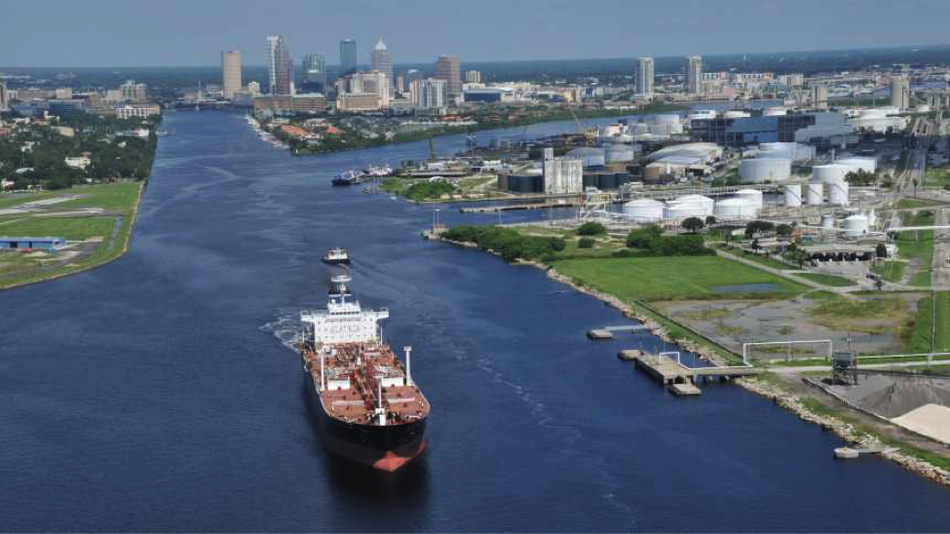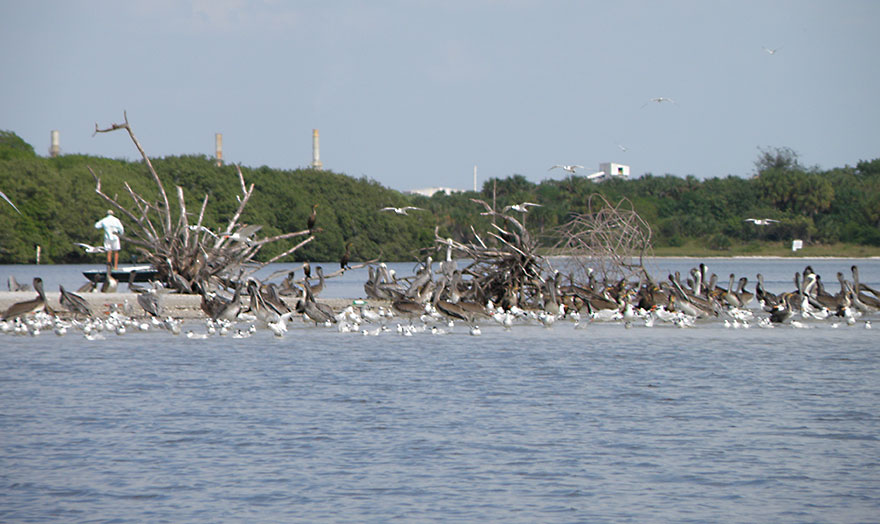
Most of us never see it or even realize that the 42-mile Tampa shipping channel is an economic artery for the region. In a bay that averages just 11 feet deep, Port Tampa Bay and Port Manatee would never be able to host the modern ships that provide an estimated $22 billion to our economy every year without the 43-foot-deep channel.
Ever-larger ships and a booming economy, however, have created kinks in that vein, and Port Tampa Bay and the U.S. Army Corps of Engineers (USACE) have kicked off a three-year study to determine how to make the channel work more effectively. Both widening and deepening the channel are being considered, particularly near the mouth of the bay where some ship traffic forces the channel into one-way traffic, and at the Gadsden Point Cut south of the Interbay Peninsula. Three locations in Hillsborough Bay also are being considered for channel improvements at key intersections.
“We don’t expect to see any significant (environmental) impact from the dredging,” said Mike Ornella, the USACE biologist who is leading the assessment required under the National Environmental Policy Act. “There are no seagrasses near the channel and the hard bottom that is there is actually side-cast materials from previous cuts.”
Along with where and how deep to dredge the channel, USACE is looking at where to put the dredged materials, estimated to be from 7 to 8 million cubic yards – or even up to 50 million cubic yards, depending on the final scope of the widening project.
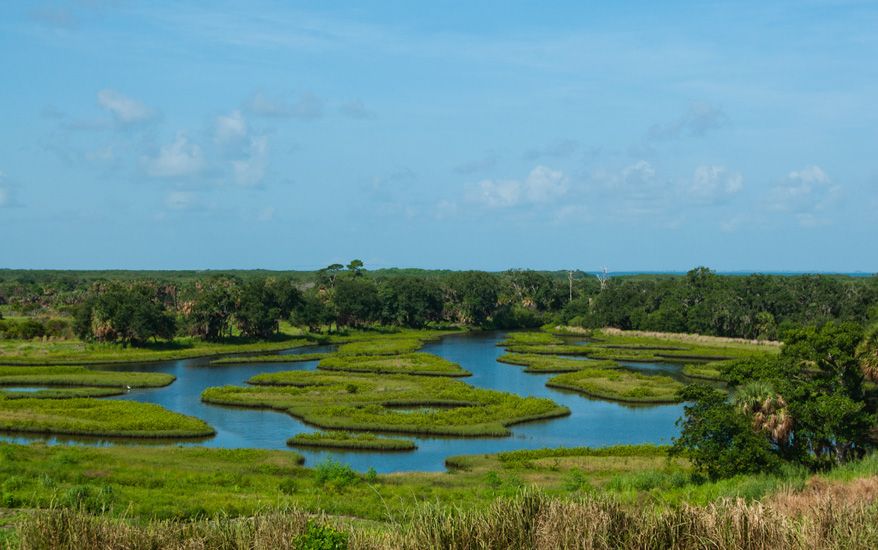
In the past, that dredged material has been used to fortify eroding shorelines at Egmont Key and the Richard T. Paul Alafia Bank Bird Sanctuary, sculpt the mosaic of habitats at Cockroach Bay Preserve and fill dredge holes dug decades ago for sand or fill material. It’s not as easy as just dumping the dredged material where it’s needed though.
The Florida Department of Environmental Protection has very stringent rules on what kinds of dredged materials can be used where, and much of the material dredged from Tampa Bay is too silty to use on beaches. Additionally, the USACE is charged with finding the “least-cost environmentally acceptable” option for disposing of dredged materials, and the cost of transporting the material is often the most expensive factor in a dredging project.
USACE is currently scheduling monthly meetings with primary stakeholders to determine which options should be prioritized with a draft plan expected to be released by Spring 2023. Projects being considered for this round of dredged material include:
- Egmont Key, which has lost more than a third of its western shoreline, could use an additional 5 to 6 million cubic yards for a complete restoration, or more than one million for beach and dune replacement. Learn more at https://baysoundings.com/egmont-key-protecting-the-tampa-bay-region-for-nearly-250-years/ or https://baysoundings.com/erosion-jeopardizes-egmont-key/.
- Islands on the Alafia Banks, originally created from dredged material from in the 1920s, are considered globally important bird habitat, but they’re exposed to high wave action from passing ships. USACE is anticipating placing 500,000 to 1 million cubic yards of dredged material around the islands to maximize shorelines, create shallow water habitat for seagrasses and wading birds, or hard-bottom, depending on final designs. Learn more at https://baysoundings.com/living-shorelines-protect-nesting-birds/
-
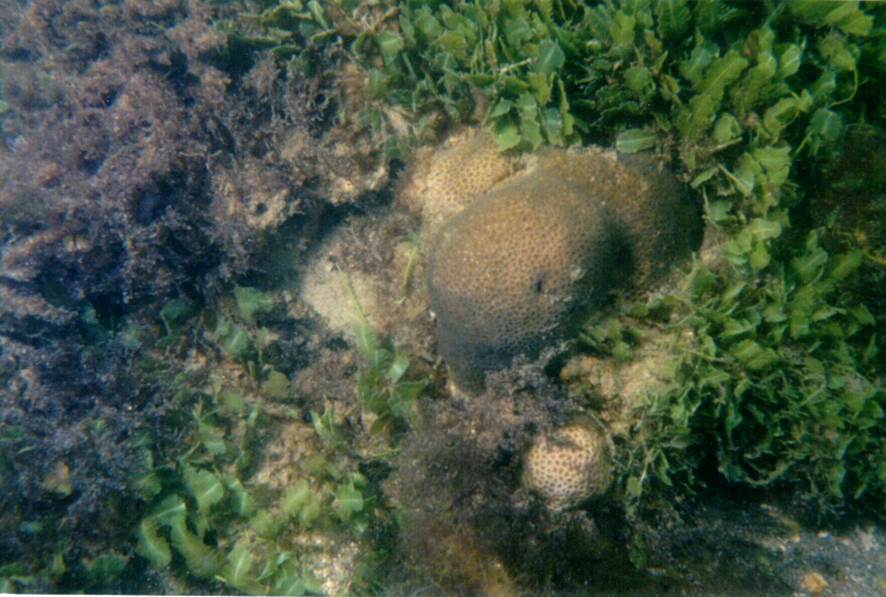
Hard bottoms are known hot spots for algae, fish and invertebrates in Tampa Bay. Photo courtesy Florida Department of Environmental Protection
Create hard-bottom habitat in Tampa Bay using rocky materials from widened and deepened channels near the mouth of the bay. Hard-bottom habitat is one of the rarest – and potentially most valuable – habitats in the bay. Learn more at https://baysoundings.com/new-research-shows-hard-bottom-habitat-even-important-expected/ - Manatee County would like to provide boating access on the southern approach to the Sunshine Skyway Bridge that would require 1 to 2 million cubic yards of dredged material.
- Port Tampa Bay has proposed a 63-acre expansion at East Bay which would require three to four million cubic yards. Learn more at https://baysoundings.com/port-tampa-bay-proposes-63-acre-expansion/
- Manbirtee Key is a former spoil island being managed as shorebird habitat by Audubon for Port Manatee but it requires regular clearing to remove invasives. A thin layer of sandy material may help clear invasive plants so that natives can be replanted.
-
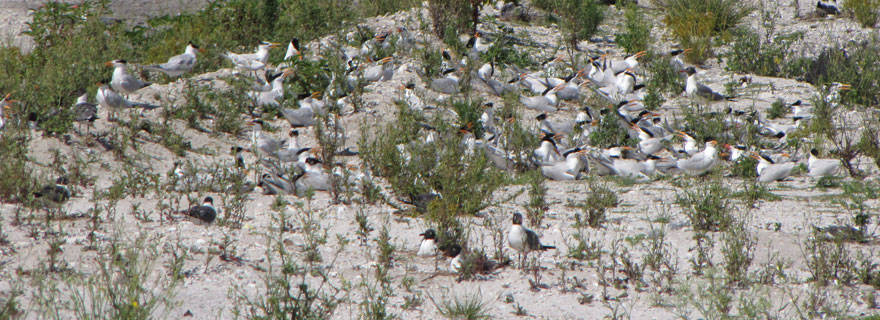
Nesting birds flock to spoil islands near the Alafia Banks. Photo courtesy Florida Audubon
Two former spoil islands near the mouth of the Alafia River also are managed as shorebird habitat, and there is an opportunity to replace sand sediments on their eastern shorelines to expand habitat for American oystercatchers, provide additional shallow-water habitat for foraging and seagrasses and potentially create hard-bottom habitat. Learn more at https://baysoundings.com/unique-partnership-protects-nesting-birds-in-tampa-bay/ - The Reddish Egret Working Group has identified a decline in suitable foraging habitat, mostly shallow mudflats. It could be created with silty sand. Learn more at https://baysoundings.com/reddish-egrets-post-population-growth-caution-still-needed/
For a complete breakdown of the USACE presentation, visit https://www.tbrpc.org/wp-content/uploads/2022/03/20220310-Tampa-Harbor-ABM-Stakeholder-Meeting.pdf.
If you are working on a project that could use the dredged material, please contact Aubree Hershorin at aubree.g.hershorin@usace.army.mil to be considered.
By Vicki Parsons, originally published June 25, 2022
